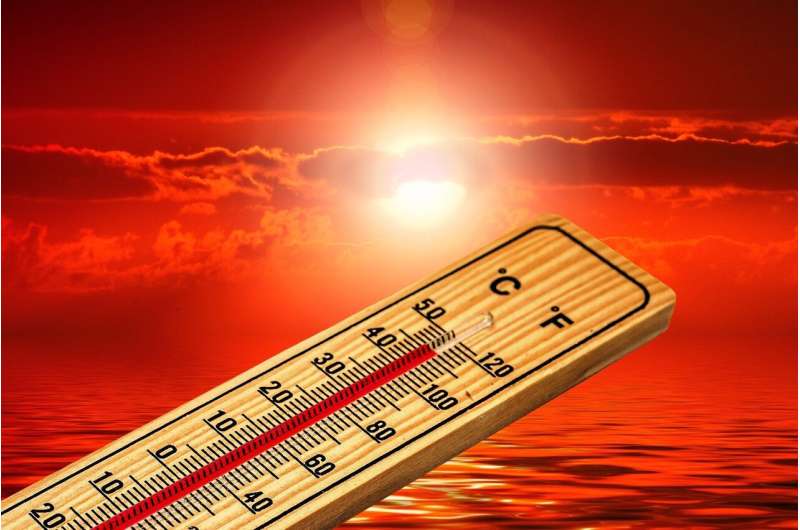This article has been reviewed according to Science X's editorial process and policies. Editors have highlighted the following attributes while ensuring the content's credibility:
fact-checked
trusted source
written by researcher(s)
proofread
Opinion: COP28 agreement on adapting to climate change kicks the real challenge down the road

COP28 concluded late on Wednesday morning to a mixed reaction. The Dubai agreement extracted a promise from nearly 200 countries to transition away from fossil fuels, but it leaves many questions unanswered when it comes to keeping global average temperatures from warming by more than 1.5°C. The world is rapidly running out of time to limit temperatures to this level—a crucial threshold for many communities living in low-lying islands and delicate ecosystems such as coral reefs.
The last year was the hottest on record, with catastrophic floods in Libya, extreme heat in south Asia, Europe, China and the US, and droughts across east Africa which were all made more likely as a result of climate change.
Even if the world keeps to 1.5°C, countries will still need to adapt to the effects of a harsher climate. If temperatures exceed 1.5°C, this will be even harder. At COP28, countries agreed the first targets to guide the global effort to adapt.
So, do they go far enough to address the growing scale of climate impacts?
Adaptation is essential
I am a researcher writing a book about the hard choices the world must make to adapt to climate change. For 12 years I have been working on adaptation planning and finance, attending the UN negotiations and researching how to make adaptation more ambitious and inclusive.
Every fraction of a degree of warming avoided by cutting emissions will give communities more breathing space to adapt. Adaptation involves making changes to accommodate the hotter climate and lessen its effects.
Farmers in sub-Saharan Africa struggling to grow food due to changes in rainfall can adapt with improved forms of irrigation and new crop varieties to maintain a similar level of productivity. Coastal communities can build seawalls to protect them from storm surges or plant mangrove forests to prevent the land eroding as fast. Bangladesh has developed early warning systems and invested in cyclone shelters.
The global framework for adaptation's targets set out what countries must do and where the most progress needs to be made for goals like reducing climate-induced water scarcity. Even to get this agreement was a success given the technical and political challenges in measuring something like adaptation, which covers so many different things, from giving farmers in Asia better information on rainfall to increasing shade and cool spaces in cities.
We have limited ways to understand if the world is on track for many of these areas and the agreement contains a two-year work program to develop indicators. We have more information on the systems and plans needed. For example, 101 countries have multi-hazard early warning systems in place—the goal aims for this to be all countries by 2027.
The framework will guide investment and shape the implementation of adaptation measures for the next decade. It will allow the global community to check if this process is on track, and to change course if it is not.
Will the goal meet the scale of the challenge?
A key sticking point for developing countries across the negotiations in Dubai was securing enough money from developed countries (the largest historical emitters and so the biggest culprits of climate chaos) to actually implement these necessary actions.
Developed countries have failed to deliver the US$40 billion (£31 billion) to US$50 billion a year promised as part of a doubling of money for adaptation agreed in 2021. This is part of the overall finance target of US$100 billion a year—agreed for both mitigation (cutting emissions) and adaptation back in 2009.
The latest UN report on adaptation showed that only US$21 billion was delivered in 2021, while financial needs for adaptation are 10–18 times higher than the amount of public finance available.
The agreement on adaptation in Dubai talks generally of the need for more finance, but makes few commitments. This is not enough, but detailed work on the next financial deal is scheduled at COP29. The agreement next year will aim to set a new target for mobilizing money to reduce emissions and adapt—the target will replace the US$100 billion a year that runs until 2025.
Research shows that progress on adaptation has been slow, fragmented and uneven across the world. Between 3.3 and 3.6 billion people live in places that are expected to be highly vulnerable to climate change. In Africa, tens of thousands of people will die from extreme heat unless radical measures are taken to adapt. Between 800 million and 3 billion people will not have enough water at 2°C global warming—and up to 4 billion at 4°C. We also have very little evidence that funded adaptation measures are working.
The agreement in Dubai signals that the adaptation effort is off track and highlights areas for action such as water, food, health care and infrastructure. Critically, it offers little detail yet to check on global progress—we will need to wait one year for a new financial target and another two years for indicators that can assess progress in adapting lives and livelihoods.
Frameworks can create incentives for action, and it is vital the new global framework creates pressure for ambition and finance. But countries will need to wait to agree the detail on the money and the targets that will give it the teeth it needs.
While COP28 yielded incremental progress, the world waits for a leap forward in the pace and scale of climate adaptation.
Provided by The Conversation
This article is republished from The Conversation under a Creative Commons license. Read the original article.![]()





















